Drying licorice root from your garden is an inexpensive way to preserve this popular herb for teas or herbal remedies.
Drying your own herbs is a great way to save money and you can be assured that the plants haven’t been sprayed with any harmful chemicals.
In this article I’ll share my tips for harvesting and drying licorice root to make your own herbal tea.
This post contains affiliate links. Please read the disclosure for more info.
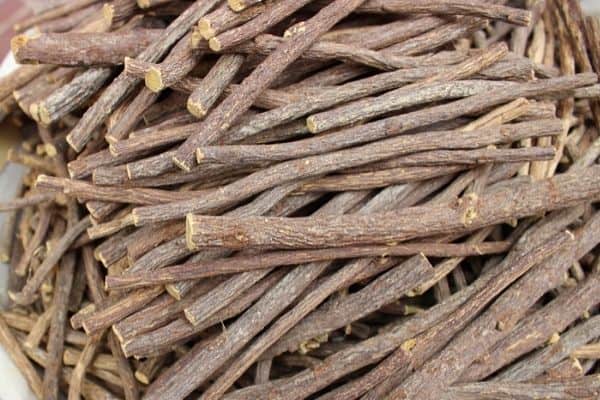
Licorice root (Glycyrrhiza glabra) is a popular herb that has been used for thousands of years in traditional Chinese herbal medicine. [1]
It has a very sweet flavor, which makes it one of the most commonly used herbs to make tea.
When brewed in hot water, licorice root creates a delicious tasting tea that is as good for you as it tastes!
You can also use licorice root in baking recipes or add it to custard or desserts.
Harvesting licorice root
Licorice roots can be harvested when the plant is two years old and the best time to harvest the roots is in fall when the plants have finished flowering and the growing season is complete.
Licorice root is quite a large herb, so you’ll need to dig up the entire plant including the roots.
Lift the whole plant from the ground using either a spade or garden fork.
Cut the roots using garden shears and wash them thoroughly.
You can leave the tap root and a few of the main roots attached to the plant if you’d like to replant it back in the garden.
Drying licorice root
There are a few different ways to dry licorice roots:
Air drying
Air drying is a popular method of drying herbs because it allows air to circulate around the herbs, which prevents them from going moldy.
Gather a small bunch of licorice roots and tie them together with string.
Hang them up in a cool, dry place for three to six weeks until fully dry.
Sun drying
You can also dry licorice root in the sun, which is a bit quicker than air drying.
Cut the roots into small pieces, about an inch (2.5 cm) long with a pair of sharp scissors or clean garden shears.
Place the pieces of root on a tray and leave it in a sunny spot that is protected from wind.
The roots should be dried out in about two weeks.
Dehydrating
Using a dehydrator is a fastest way to dry the roots, but you need to keep a close eye on them.
Place the chopped roots on the dehydrator trays, making sure that they’re spaced out.
Put the lid on the dehydrator and set it to a low temperature setting.
Check the roots after a few hours and remove them once they’re dry.
You can store dried licorice roots in an airtight glass jar for up to a year.
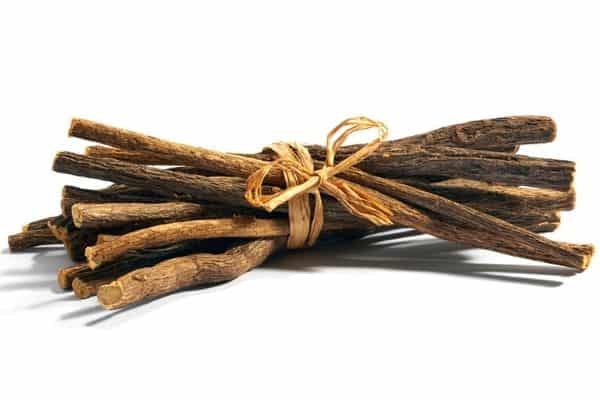
How to grind licorice root into powder
Dried licorice roots cut up into small pieces can be ground into a fine powder using a clean coffee grinder.
If you don’t already own a coffee grinder, they are quite inexpensive to buy and they come in handy for grinding seeds and herbs, as well as coffee beans.
Ground licorice root powder can be used for making teas, herbal remedies and licorice flavored foods.
If you are using your grinder for coffee beans, make sure to clean it thoroughly after use so that the coffee doesn’t mix into your dried herbs.
How to make licorice tea
Licorice tea is made by adding a teaspoon of dried roots to one cup of boiling water.
If you’re using a teapot, add 2 teaspoons of dried licorice root to the pot.
Boil the water and allow the tea to steep for about three minutes, strain and enjoy.
If you prefer a stronger herbal tea you can let it steep for longer.
You can also create your own blends of herbal tea by combining dried licorice root with other herbs such as cinnamon, ginger or mint.

So there are my tips for drying licorice root from your garden.
Licorice root is a beautiful sweet tasting herb that has many health benefits and it’s not difficult to dry and store for future use.
RELATED ARTICLES
Have you tried harvesting and drying licorice root to make herbal tea? Let me know in the comments below.
Are you on Pinterest? I have boards dedicated to Herb Gardens and Gardening Tips that you may find interesting. You can also find me on Facebook.
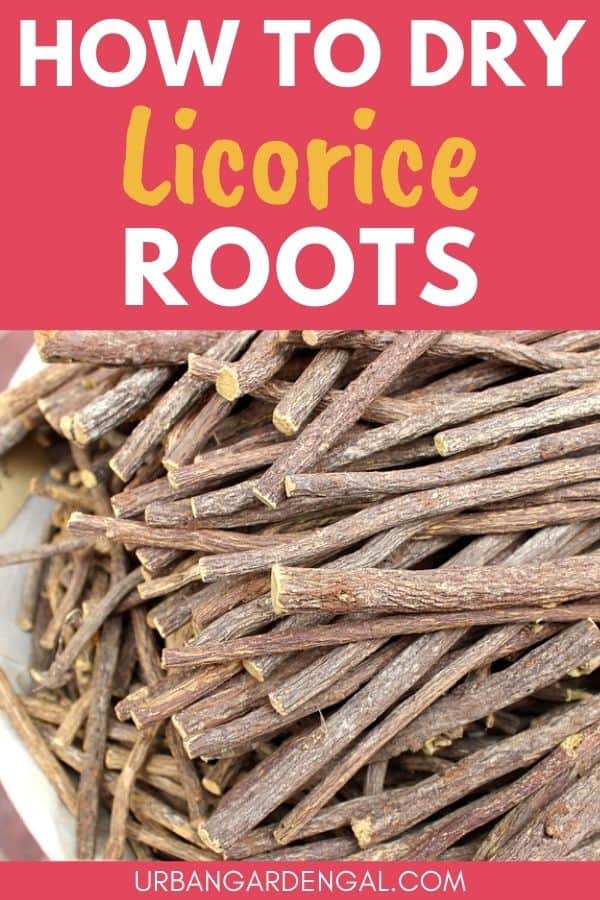

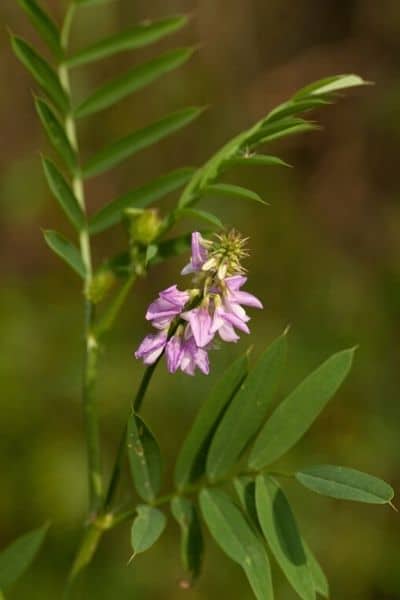
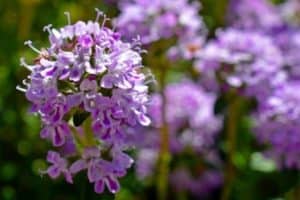



Hello! Would love to grow Licorice Root. What zone do you live in? I am in 5b – wondering if it would work here. Thanks for the great article!
Hi Michele, Common Licorice (Glycyrrhiza glabra) is best suited to growing in USDA zones 8-9, but you may be able to grow it indoors.
I grow licorice root in Zone 5B. It dies back in the winter, but comes back each spring. I planted it four years ago, and this is the first time I’ve harvested the roots. I dug up smaller off-shoot plants that had spontaneously grown, about 2-4 feet from the mother plant. I followed the root back from each of the off-shoot plants. There was usually one sturdy root for each.
Hi! I was just given some licorice root by a friend. Neither of us has ever used it before. He said I should try and peel it before grinding it. How would I do that – like whittling? Or could I wash it well with water? Or is it ok to use as is? Thank you!
Hi Kelly, I don’t worry about peeling the roots, just give them a good wash before drying them.
Thank you for your quick reply!